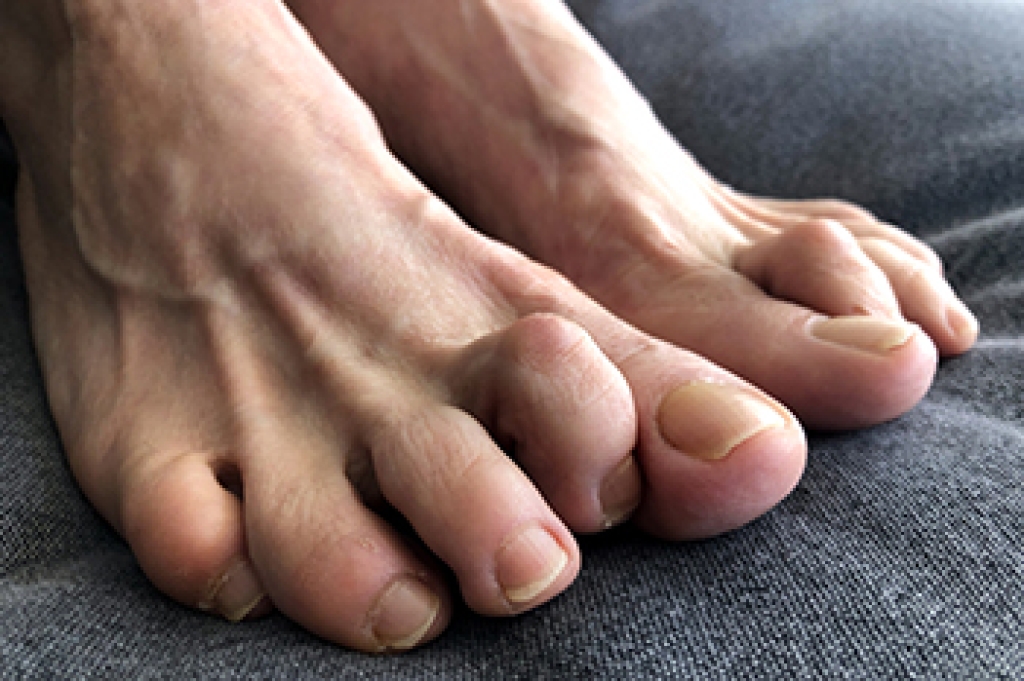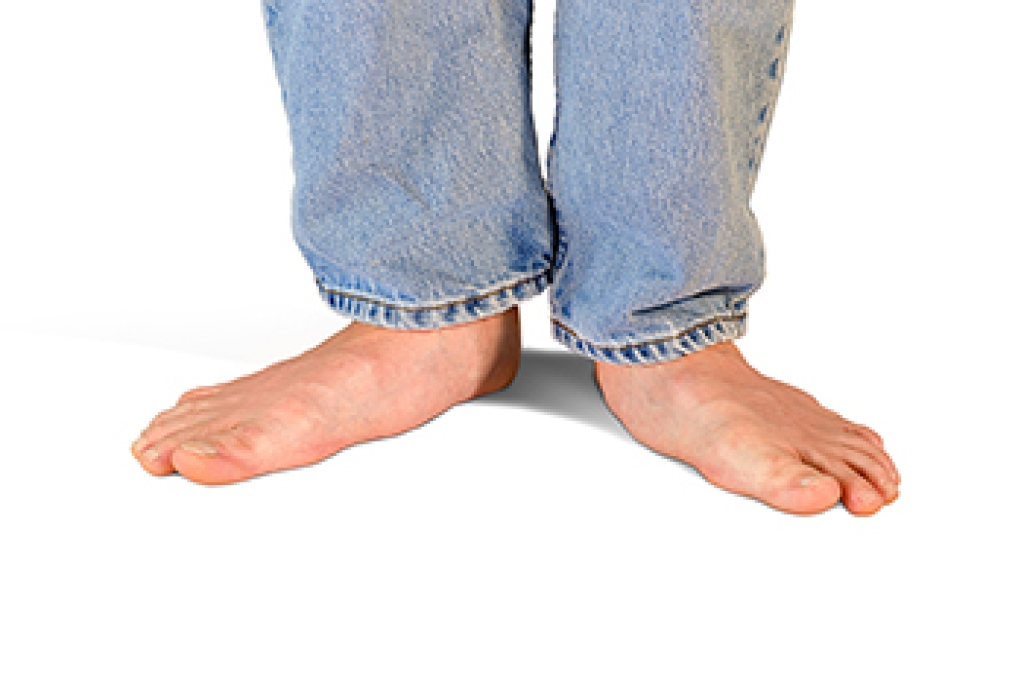 Hammertoe is a toe deformity characterized by toes that bend downward at the middle joint. This deformity can affect one or multiple small toes. Other than a visible deformity, symptoms can include pain, irritation, corns, and calluses on the affected toes as they rub against your shoes, inflammation, redness, a burning sensation, and a permanent tightening and stiffness of the affected toes. Hammertoe usually develops slowly over time and gets progressively worse if left untreated. Conservative treatment options, such as footwear modifications and orthotics, can stop or slow the progression. Over-the-counter pain medications and padding can help alleviate pain. If you suffer from painful hammertoe, it's suggested that you see a chiropodist for treatment.
Hammertoe is a toe deformity characterized by toes that bend downward at the middle joint. This deformity can affect one or multiple small toes. Other than a visible deformity, symptoms can include pain, irritation, corns, and calluses on the affected toes as they rub against your shoes, inflammation, redness, a burning sensation, and a permanent tightening and stiffness of the affected toes. Hammertoe usually develops slowly over time and gets progressively worse if left untreated. Conservative treatment options, such as footwear modifications and orthotics, can stop or slow the progression. Over-the-counter pain medications and padding can help alleviate pain. If you suffer from painful hammertoe, it's suggested that you see a chiropodist for treatment.
Hammertoe is a common foot deformity in which one or more of the small toes bends downwards at the middle joint. Though it may seem like a purely cosmetic issue, this is not the case. Hammertoes can be uncomfortable, painful, and even debilitating in severe cases. If you suffer from hammertoe, please consult with one of the chiropodists from The Footcare Centre. Our chiropodists can help you maintain the health of your lower limbs and your mobility.
Symptoms
- One or more small toes bending downward at the middle joint
- Pain or irritation on the affected toes
- Corns and calluses
- Inflammation
- Redness
- Stiff toe joints
- Sores on the tops of the toes
Diagnosis
A chiropodist can typically diagnose hammertoes through physical examination. X-rays may need to be taken to see the extent of the damage.
Treatment
Hammertoes tend to progressively worsen with time, so getting prompt treatment is very important. In its early stages, the progression of hammertoe can be slowed down or stopped. Your chiropodist may suggest changes in your footwear. Wearing wide, comfortable shoes with a larger toe area and a low heel can help you avoid putting pressure on your toes. You may also be prescribed orthotics. Over-the-counter medications or corticosteroid injections may be used to relieve pain. If you have any corns or calluses, your chiropodist may suggest padding them to avoid further irritation. In advanced cases, surgery may be suggested.
If you have any questions please feel free to contact our office located in Niagara Falls, ON .



 Flat feet
Flat feet